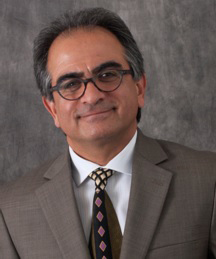 Evolution of Microwave and Millimeter Wave Imaging for NDE Applications & Diagnosis of Human Skin Lesions (Cancer and Burns) Using High-Frequency Techniques
Evolution of Microwave and Millimeter Wave Imaging for NDE Applications & Diagnosis of Human Skin Lesions (Cancer and Burns) Using High-Frequency Techniques
Reza Zoughi
Applied Microwave Nondestructive Testign Laboratory (amntl), Electrical and Computer Engineering Department, Missouri University of Science and Technology (S & T), Rolla, MO 64509
High-frequency signals in the microwave and millimeter wave regions are also effective candidates for evaluating human skin lesions caused by burns and cancers. According to the American Cancer Society (ACS) “Cancer of the skin is by far the most common of all cancers. Melanoma accounts for less than 2% of skin cancers cases but causes a large majority of skin cancer deaths”. The ACS estimates that in 2014 in the United States about 76,100 new cases of melanoma will have been diagnosed and approximately 9,710 people are expected to die from melanoma. If diagnosed in their early stages, 95% skin cancers are curable. Visual inspection using size, shape, color, border irregularities, ulceration, tendency to bleed and whether the lesion is raised, hard or tender are common approaches to diagnosis. Visual inspection is subjective and susceptible to human error. Malignant skin tumors have different biological properties than the surrounding healthy skin, which enables distinction between these two types of skin using a proper inspection technique. A noninvasive method producing reliable and real-time information about a suspected skin malignancy, that enables dermatologists to obtain a real-time diagnosis of the likelihood of a lesion being cancerous, would be of great clinical and diagnostic value.
Burn injury represents a wide range of tissue damage. The classification and treatment of thermal injuries are determined based on the depth of invasion into the underlying tissue. The postoperative management of skin and skin-substitute grafts is complicated by the need to stabilize the grafts with dressings, which introduces some limitations for readily removing it to monitor the grafted wound for correctible problems. When it comes to burned skin, comprehensive diagnosis refers to detection as well as evaluation of critical parameters, the most critical of which is the depth of invasion. A diagnostic tool allowing for real-time qualitative and quantitative evaluation of a burn through desiccated skin or optically-opaque dressings represents a significant addition to the medical toolbox used by physicians and first responders caring for burned patients.
As it relates to evaluation of human skin, the interaction of millimeter wave signals is dependent upon the biophysical (i.e., dielectric and thickness) properties of skin, as well as electromagnetic parameters such as the frequency of operation and specific characteristics of the probe used. There are several technical and practical beneficial features that make high-frequency evaluation of human skin quite attractive as a potential medical diagnostics tool. The possibility of real-time imaging of human skin at millimeter wave frequencies, has the real potential to lead to a new paradigm shift in the way human skin is diagnosed for burns and cancers.
In this tutorial, a historical and technical review of high-frequency inspection techniques, used for evaluating skin cancer and burned skin, will be presented. Issues related to technical advances in developing real-time imaging systems as well as the potential future possibilities in this realm will be discussed.
